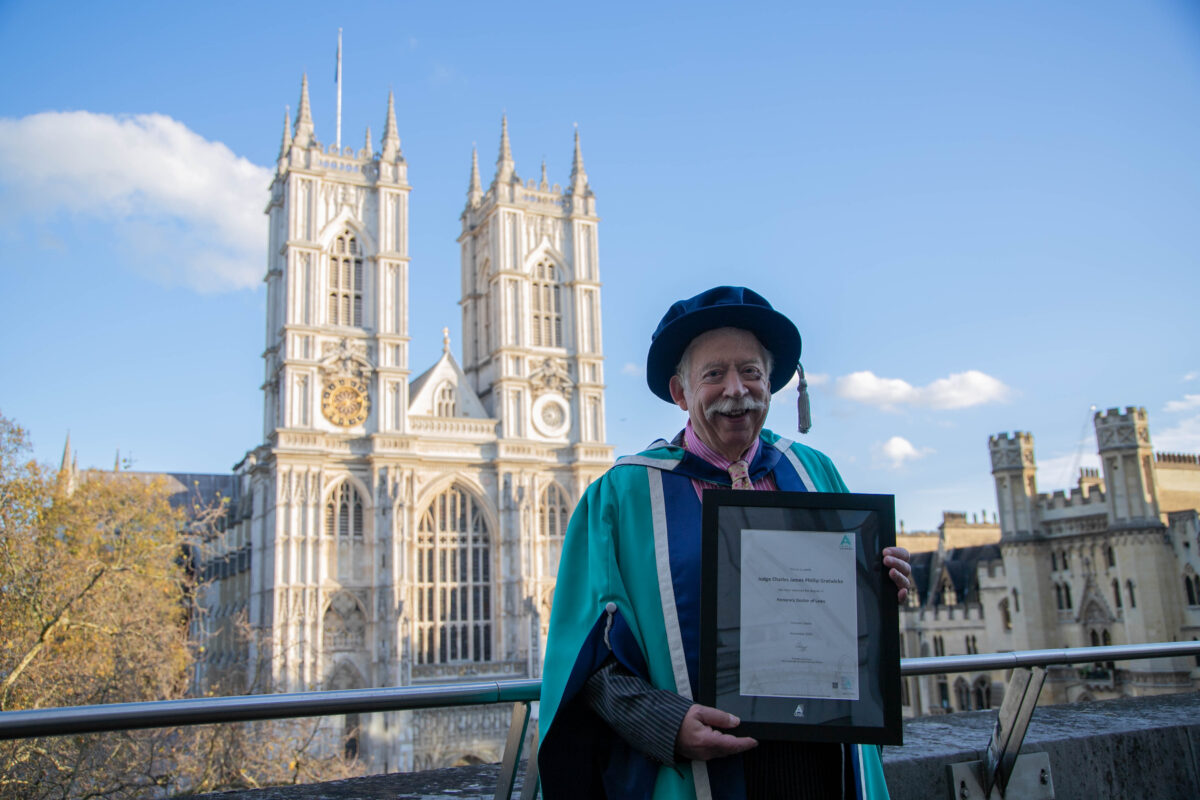The Social Mobility Impact of “De-Funding” the Solicitor Apprenticeship

Executive Summary
The Government is considering changes to funding for level 7 apprenticeships which could mean that, in the future, the solicitor apprenticeship is no longer eligible for funding. To support the decision-making process, we conducted a survey of our current solicitor apprentices to understand their circumstances and the impact the apprenticeship is having. The results, from 110 apprentices, show that, for a substantial number, the solicitor apprenticeship is supporting social mobility and that many would otherwise have faced barriers to career progression.
The first of the Government’s five key missions is to “kickstart economic growth”, and make everyone, not just a few, better off. The fourth is to “break down barriers to opportunity” and ensure there is no class ceiling on ambition. A decision to de-fund the solicitor apprenticeship would conflict with both of these manifesto pledges.
There are ways other than de-funding that would allow the Government to achieve its fiscal objectives and retain the positive impact of solicitor apprenticeships. However, doing so will require genuine consultation with the sector, careful thought and co-operation.
Introduction
At Damar, we see every day how apprenticeships create ladders of opportunity that allow talented, ambitious people, regardless of age or background, to reach their potential. It is why, in 2023, we launched a solicitor apprenticeship in partnership with BARBRI and why we have developed a pathway that allows individuals from a wide variety of academic and vocational backgrounds and ages to take an apprenticeship route to qualification as a solicitor. It also allows employers to break the apprenticeship journey into stages, increasing accessibility for smaller employers and in-house teams that cannot plan six or more years ahead.
We believe that the withdrawal of funding would reinstate the class ceiling that has for so long blighted the legal profession but where progress is now being made; and that such action would impose further barriers rather than breaking them down.
That is why we wanted to engage with apprentices and add more detailed social mobility data to the higher-level information that we are required to collect by the Education & Skills Funding Agency. The data we have collected, and which is summarised below, shows that most of Damar’s solicitor apprentices are not from “traditional” lawyer backgrounds. Nearly all went to state schools. A considerable number were eligible for free school meals. Most had parents who did not go to university. Their social class is reflective of the wider population rather than the legal profession.
Those who have degrees generally did not attend Russell Group universities and they have significant student debt. Many of our older apprentices have caring responsibilities and benefit hugely from the paid study time to which apprentices are entitled.
Damar’s solicitor apprentices are not people already “at the top of the ladder”. They are on a route to day one competence as newly qualified solicitors. Without the solicitor apprenticeship, most would not have been able to qualify. They would be stuck in lower-level roles or would find jobs outside legal services.
We asked our apprentices how things would have been different for them had the apprenticeship not been available. Some of their comments are below. I urge you to read them.
Although the primary focus of this report is the apprentices, we also looked at where our solicitor apprentices work. The vast majority of our employer partners are small and mid-sized firms, public sector and in-house teams. They are in every region of the country and provide all manner of legal services to individuals and organisations. Most such employers have never been able to sponsor graduate programmes, and many have previously been unable to take on trainees. The diversity of employers is an economic and growth benefit; it also means there are more opportunities for apprentices closer to where they live. It is worth noting too that smaller firms are more likely to have partners who are Black, Asian or of minority ethnic backgrounds [source: SRA diversity report], and that the withdrawal of funding would have a greater impact on these smaller firms.
Apprentices and Social Mobility
The first four questions from our survey were taken from the Social Mobility Commission’s financial and professional services employer toolkit. Where possible, we have compared the data to the most recent SRA diversity report for all lawyers, to various government reports for the general population and to the most recent government apprenticeship data.
Parental occupation
| Background* | Percentage of lawyers | Percentage of solicitor apprentices | Percentage of the general population |
| Professional | 66% | 43% | 37% |
| Intermediate | 15% | 24% | 24% |
| Lower socio-economic (working class) | 20% | 33% | 39% |
Parental education
73% of our solicitor apprentices did not have a parent who went to university. We have not been able to find how this compares to lawyers. However, only 39% of university students did not have a parent who went to university [source: Higher Education Student Statistics: UK, 2021/22 – Student numbers and characteristics | HESA].
School attended
| School attended* | Percentage of lawyers | Percentage of solicitor apprentices | Percentage of the general population |
| Independent or fee-paying | 25% | 6% | 7% |
| State | 75% | 94% | 93% |
Free school meals
35%* of our solicitor apprentices received free school meals. We cannot find any data for lawyers. However, the national figure is 25% [Source: Schools, pupils and their characteristics, Academic year 2023/24 – Explore education statistics – GOV.UK ].
*Excludes “don’t know” and “not applicable” (e.g. because they were educated overseas) responses.
Across all four questions, the message is clear. Damar’s solicitor apprentices broadly track or are a little behind the general population in terms of social advantage. Compared with lawyers, most of our solicitor apprentices are significantly socially disadvantaged.
Our survey did not look at ethnicity, or disability data, which are captured as part of the enrolment process. Both intersect with social disadvantage and so it is relevant to note here that 15% of Damar’s solicitor apprentices are Black, Asian and minority ethnic (compared to 19% of lawyers, 18% of the population and 15% of apprentices nationally); and that 17% have a disability (compared to 6% of lawyers; 18% of the population and 15% of apprentices nationally).
Post-18 education
Many of our solicitor apprentices (71%) are graduates (based on enrolment data). Some have law degrees or have completed the post-graduate diploma in law (PGDL). Others have non-law degrees. It can be tempting to conclude that graduates in general are advantaged and do not need the support of the apprenticeship route. This is not the case. Of our graduate apprentices who responded to the survey:
- 75% did not attend a Russell Group University
- Their average student debt is £42,000.
There are over 30,000 law and PGDL graduates each year and only 5,500 training contracts [Source: How hard is it to get a training contract? | AllAboutLaw]. For apprentices with less social capital, particularly if their degree was not from a “top” university, the chances of securing a training contract and qualifying as a solicitor are slim.
We are proud to offer longer apprenticeship pathways for apprentices who have not completed an undergraduate degree. This group makes up about 29% of our solicitor apprentices. The most common route for these apprentices is to start on the paralegal apprenticeship standard and then progress to the solicitor apprenticeship standard. The route allows apprentices and employers the chance to pause between programmes and reduces the pressure that a six-year apprenticeship can create.
Age
From our enrolment data, we know that 69% of our solicitor apprentices were aged 25 or over at the start of their apprenticeship.
33% of respondents to our survey (nearly all of them aged 25+) have caring or other personal responsibilities that severely restrict study outside working hours. Without the apprenticeship route, it is likely that many older apprentices with caring responsibilities (usually women) would effectively be excluded. An age restriction would also disproportionally affect those apprentices who have had an unconventional career path, have had children in their early 20s, been stuck in a paralegal role without a progression route for some time, or are progressing from a paralegal apprenticeship to a solicitor apprenticeship.
In many cases too, our older apprentices’ career progression has been slowed by a class ceiling. Would it be equitable to now restrict their progression on account of their age?
What would have happened without the apprenticeship?
There will undoubtedly be solicitor apprentices at the largest law firms where employer sponsorship would have been available. This is not the case for Damar’s solicitor apprentices. When asked, just two of the 110 apprentices who responded to our survey thought their employer would have paid for their studies.
We asked apprentices how things would have been different for them had the solicitor apprenticeship not been available. These are just some of the responses*:
- “I would probably have stayed as a paralegal and not been able to progress further.”
- “I am caring for young children and an elderly relative so I wouldn’t have been able to start studying for years. I think it would have taken me another 10 years to qualify and only then if lots of things had gone to plan.”
- “I did my degree over 10 years ago and could not afford to do any further study until the apprenticeship.”
- “I don’t think I would have been able to do it – money would have been very tight. It is a fantastic, accessible programme. It is vital that we keep these apprenticeships so people are able to become solicitors regardless of their background.”
- “I would just work day-to-day with no progression or any prospects of a salary where I could be fully self-sufficient.”
- “I wouldn’t have become a solicitor as I can’t afford to give up work to study.”
- “I would have stopped after my CILEX level 3 exams and not been able to progress.”
- “I am the sole earner at home and would not have been able to fund the course.”
- “I progressed from a level 2 apprenticeship to the level 3 paralegal apprenticeship and then to the solicitor apprenticeship. I learn better through the practical experience and study of an apprenticeship. Without the solicitor apprenticeship I would have had to change career path.”
- “I would have given up my dream of qualifying as a solicitor.”
- “I wouldn’t have been able to cut my working hours to give me time to study – I wouldn’t have been able to qualify.”
- “I think I would have been looking at an entirely different sector to work in.”
*Some parts of these quotes have been edited to ensure the anonymity of the respondent.
Apprentices and their employers
There can be a perception that most providers of legal services are wealthy. This is certainly true of some, but it is not the case for the overwhelming majority of the organisations where Damar’s solicitor apprentices work. Of our 177 partner-employers with solicitor apprentices:
- 48% do not pay the Apprenticeship Levy (this means they have an annual UK pay bill of less than £3m)
- 89% are based outside London.
They include 23 local councils, 20 in-house legal teams and one Law Centre. Of our partner law firms with Damar solicitor apprentices, only three have more than 1,000 employees. Our survey respondents were from fewer firms (because not all apprentices responded), but we also asked them roughly how many employees their firms had. The most common band (by employer size) was 1-100 employees, which is where 39% of respondents are employed.
Conclusion
The Government is facing tough choices in every area of public spending. In skills, the apprenticeships budget is fully spent because about £800m of Levy funding is retained each year by the Treasury. As a result, the Department for Education is looking to release funding to pay for priority areas: more apprenticeships for younger people, increased apprenticeships at levels 2 to 5, new foundation apprenticeships and other, shorter, skills programmes. It wants employers to invest more in skills and to “lean in”.
These objectives are laudable, including the desire for employers to invest more. There have been suggestions that, because some level 7 apprenticeships (including the solicitor apprenticeship) are popular amongst employers, wholesale removal of funding will not discourage employers from paying for apprenticeships or other training.
A few may pay. But will they be our local councils, the in-house teams, the smaller, medium-sized and regional firms, the high street practices serving our local communities and businesses, all of whom struggle to attract and retain talent and many of whom are facing their own funding pressures?
Will the largest firms still be able to invest at current levels in ambitious, 6-year programmes and fund outreach activities in local schools and disadvantaged communities, activity that has contributed to law firms accounting for 31 of the top 75 employers in the 2024 Social Mobility Index? We should not forget also that these larger firms represent only a tiny minority of the 10,000+ providers of legal services.
Most importantly, will those ambitious future lawyers, some of whom are quoted above, be able to achieve their potential?
Or will much of this talent be lost, unable to compete on anything approaching a level playing field against their more fortunate peers?
Or will we revert, inexorably, to a two-tier system where those in the second tier manage to take a vocational or apprenticeship route to technician level, but only the most fortunate progress further?
There are sensible ways in which the Government could achieve its fiscal objectives and retain substantially all the positive impact of solicitor apprenticeships. However, to do so will require genuine consultation with the sector, careful thought and co-operation.
By Jonathan Bourne, MD of Damar Training











Responses